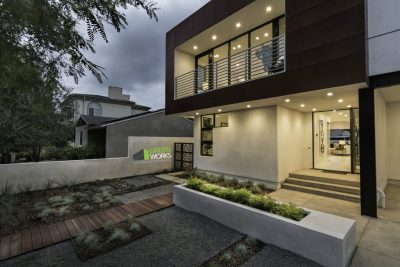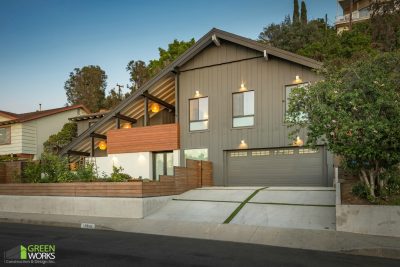
ADU Regulations in California
June 13, 2023
Navigating the Landscape of ADU Regulations in California
The State of California has a rich and complex history when it comes to legislation concerning Accessory Dwelling Units (ADUs). As an integral part of the effort to combat the ongoing housing crisis, the state government has been proactively adapting its laws, aiming to make the creation of ADUs more accessible and appealing to homeowners. In this post, we’re going to delve into the details of some key regulations, and how they have evolved over time, starting with Senate Bill 1069, signed into law in 2016.
Senate Bill 1069: Pioneering Change in ADU Regulations
On September 27, 2016, Governor Jerry Brown signed SB 1069 into law, effectively setting the stage for a more inclusive approach towards the development of ADUs in the state. The law aimed to reduce the costs and bureaucratic barriers associated with the construction of these units, also known as in-law units or granny flats. The goal was simple: incentivize California homeowners to help alleviate the housing crisis by making it easier for them to add these smaller, affordable units on their property.
By definition, an in-law unit is a fully equipped, independent residential dwelling designed to house one or more people. It is built on the same parcel of land as the main single-family dwelling, and is equipped with all the facilities necessary for day-to-day living, including areas for sleeping, eating, cooking, and sanitation.
Overcoming Barriers to ADU Construction
As of January 1, 2017, SB 1069 sought to loosen some of the more rigid requirements that were discouraging homeowners from building ADUs. For instance, the strictures around parking and utility hook-ups were eased. The law eliminated the need for duplicate permits for water and electricity, and it removed the additional requirement for fire sprinkler construction if the primary residence was already equipped with them.
Furthermore, the legislation offered relief from the parking space requirement under certain conditions, such as when the residence is located within a half-mile of public transportation. All of these changes helped to make the process of creating an ADU less daunting and more financially feasible for the average homeowner.
Ongoing ADU Legislation: Keeping Up with the Changing Times
Since the enactment of SB 1069, the landscape of ADU legislation in California has continued to evolve. Several other bills have been passed that further refined and expanded upon the foundation laid by SB 1069.
Notably, the series of bills enacted in 2019 and 2020 – SB 13, AB 68, AB 881, AB 587, AB 670, AB 671, and AB 3182 – have brought substantial changes to ADU law. These amendments have served to further streamline the process of building ADUs, thereby incentivizing homeowners to take an active part in solving the housing crisis.
The amendments to ADU legislation in California serve to demonstrate the state’s ongoing commitment to addressing its housing shortage, and the role that homeowners can play in this endeavor. With the continually evolving nature of this legislation, it is crucial for homeowners and prospective ADU builders to stay informed about the current regulations.
ADU 101: Understanding Zoning and Its Impact on ADU Construction in California
When it comes to constructing an Accessory Dwelling Unit (ADU), one of the first things you’ll need to understand is how zoning codes impact the process. These are rules that regulate what can be done on a specific piece of property and are established and enforced at the city level. We will break down these zoning codes, especially as they relate to the construction of ADUs in California, to provide a comprehensive 101 guide for interested homeowners.
Deciphering Zoning Codes
Zoning codes can seem complex, but they fundamentally outline the do’s and don’ts for a given piece of land. You can find these codes for every city in the city’s municipal code, such as this example for Los Angeles.
In the context of ADUs, there are three critical terms to understand: single-family residence (SFR), multi-family residence (MFR), and agricultural residence (AFR). An ADU may be built on a property that falls under any of these zoning categories.
Conditions for ADU Permission
An ADU is permitted on a property if it meets certain conditions. Firstly, the property must be in a zone where an SFR, MFR, or AFR is allowed. In coastal areas, refer to the applicable Local Coastal Program for specific zoning rules.
Secondly, a legal SFR or MFR should already exist on the property, or an SFR should be proposed to be built concurrently with the ADU. If a discretionary review application is required (due to factors such as Oak Trees, Shared Wells, etc.), it might not prohibit the ADU, but it may restrict it.
Restrictions on ADU Construction
Not all properties are eligible for ADU construction. For example, an ADU is not permitted if the property is not zoned to allow an SFR or MFR.
Properties located in a Very High Fire Hazard Severity Zone (VHFHSZ) without two means of access to a highway are also not eligible for ADU construction. The safety of the residents is a priority, and these restrictions ensure that occupants can evacuate safely in case of a fire.
The A-Z of ADU Variations and Development Standards
When exploring the possibility of adding an Accessory Dwelling Unit (ADU) to your property, it’s essential to understand the different variations available and their specific development standards. Depending on their location relative to the primary dwelling unit, ADUs can generally be classified into three categories: Detached, Attached, and Interior. Let’s dive deeper into these categories and look at the requirements for each.
Understanding ADU Variations
1. Detached ADUs
A Detached ADU is a unit that is entirely separate from the primary structure, be it a single-family residence (SFR), multi-family residence (MFR), or agricultural residence (AFR). Examples of Detached ADUs include a guesthouse, recreation room, garage, or storage unit that has been converted into a living space.
2. Attached ADUs
Attached ADUs share at least one common wall with the primary residence. They may be built by extending the primary dwelling or converting existing space within an SFR, MFR, or AFR. An example of an Attached ADU might be a suite added above the main floor of a home.
3. Interior ADUs
Interior ADUs are located within the primary dwelling and are typically smaller in size (maximum 500 sq ft). They are usually created through the conversion of existing spaces, such as an attic or basement, and are contained entirely within the SFR or attached garage. A basement apartment is a typical example of an Interior ADU.
On a lot with an existing MFR, the maximum number of Attached ADUs is one or 25% of existing MFR units, whichever is greater, and the maximum number of Detached ADUs is two. Any additional non-conforming legal units will be considered as MFRs.
Essential Features of an ADU
An ADU is a smaller, independent residential dwelling on the same lot as the primary residence. You may also know an ADU as a granny flat, in-law apartment, carriage house, or secondary suite. To qualify as an ADU, the unit must have:
- A kitchen
- A bathroom
- A separate entrance
While an ADU does not share utilities with the primary unit and may share walls, it does not necessarily need to include a bedroom.
Junior Accessory Dwelling Units (JrADU)
A JrADU is essentially a smaller version of an ADU. California state law now allows homeowners to build both an ADU and a JrADU on their property. A JrADU is usually located within the existing walls of a primary home, including within an attached garage, and varies in size from 150 sq ft to 500 sq ft. Unlike ADUs, JrADUs can share utilities and even a bathroom with the primary residence.
Unpermitted Dwelling Units (UDU)
UDUs range from unpermitted garages to basements, essentially secondary dwelling units located in a single-family zoning district (R-1) that are maintained illegally. They might not comply with zoning codes or building and fire codes. Some UDUs may become compliant uses through inspections/approvals and/or a Conditional Use Review. However, some units may not be able to become compliant and will be required to cease use as a dwelling unit.
Please note, most cities established an amnesty period when they initially adopted their ADU regulations, providing a window for making UDUs compliant. However, these amnesty timeframes are set only for a certain amount of time and expire when the timeframe ends.
ADU Comparison
Single Family Homes
| ADU Attached | ADU Detached | JrADU | |
|---|---|---|---|
| Types of ADUs | Conversion Within Existing SFR and/or New Construction | Conversion Within Detached Accessory Structure and/or New Construction | Entirely within Existing or Proposed SFR |
| CA Govt. Code Sections | Sections 658.2 and 65852.22 | Sections 658.2 and 65852.22 | 65852.2.a.1.D |
| Eligible Parcel | Zoned Residential R-1 SFR | Zoned Residential R-1 SFR | Zoned Residential R-1 SFR |
| Property Type | Garage conversion, basement, attic, above garage apartment, remodel expansion | Garage conversion, basement, attic, above garage apartment, remodel expansion | Limited to 1 JrADU per residential lot zoned for single-family residences. Located within the existing walls of a primary home, including within the attached garage. |
| ADU Min Size | 150 sq ft | 150 sq ft | 150 sq ft |
| ADU Max Size | 50% of existing SFR or 1200 sq ft whichever is less, provided at least an 800 sq ft ADU is allowed | The total area of floor space of an attached accessory dwelling unit shall not exceed 50 percent of the proposed or existing primary dwelling living area or 1,200 sq ft. | 500 sq ft |
| Footprint | N/A | If the existing garage is demolished, an ADU with the same dimensions, including height, can be built on the footprint of the existing garage. | N/A |
| Setback | There are no setback requirements from the side and rear property lines if the footprint doesn’t change. Garage additions must meet setback requirements, which cannot exceed 4′ from the rear and side property lines in local jurisdictions. Front: Title 22 | There are no setback requirements from the side and rear property lines if the footprint doesn’t change. Garage additions must meet setback requirements, which cannot exceed 4′ from the rear and side property lines in local jurisdictions. Front: Title 23 | N/A |
| Parking | No replacement parking is required for an ADU. | No replacement parking is required for an ADU. | Local government may require replacement parking for a JrADU garage conversion. |
| Fire Safety | Fire sprinklers are not required if the primary dwelling does not have sprinklers | Fire sprinklers are not required if the primary dwelling does not have sprinklers. Local government may require sprinklers if ADU does not meet local fire access requirements (i.e. less than 150- 200 feet from curb). Building code may require a fire-rated wall if the ADU wall(s) is/are within a certain distance from: a) the main house and/or b) the side or rear property lines | Fire sprinklers are not required if the primary dwelling does not have sprinklers |
| ADU Attached | ADU Detached | JrADU | |
|---|---|---|---|
| Types of ADUs | Conversion Within Existing SFR and/or New Construction | Conversion Within Detached Accessory Structure and/or New Construction | Entirely within Existing or Proposed SFR |
| Access | Must have an exterior entrance separate from the main house. ADU may have—but is not required to have—a doorway between it and the main dwelling (subject to local rules). | Must have an exterior entrance separate from the main house | Must have an exterior entrance separate from the main house |
| Bathroom | May share a bathroom with primary residence if JrADU. Therefore when used as a JrADU—a bathroom is not required. The main dwelling may share a bathroom with the JrADU. As an ADU—a bathroom is required. | A bathroom is required | May share a bathroom with primary residence |
| Owner Occupancy | New ADU legislation removed the owner-occupancy requirement for ADUs through 2024 | New ADU legislation removed the owner-occupancy requirement for ADUs through 2024 | New ADU legislation removed the owner-occupancy requirement for ADUs through 2024. However, if a property has both an ADU and JrADU, JrADU law requires owner occupancy of either the newly created JrADU or the single-family residence. For more information on this, you can also review CA Gov. Code 65852.22(a)(2). |
| Amenities | Kitchen, bathroom, and a separate entrance | Kitchen, bathroom, and a separate entrance | Efficiency kitchen: sink, cooking appliance, counter surface, and storage |
| Utilities | Can be separate utilities or if a JrADU shared utilities | Separate Utilities | Shared Utilities |
| Impact Fees | An ADU is exempt from incurring impact fees from local agencies, special districts, and water corporations if less than 750 square feet. Should an ADU be 750 square feet or larger, impact fees shall be charged proportionately in relation to the square footage of the ADU to the square footage of the primary dwelling unit. | An ADU is exempt from incurring impact fees from local agencies, special districts, and water corporations if less than 750 square feet. Should an ADU be 750 square feet or larger, impact fees shall be charged proportionately in relation to
the square footage of the ADU to the square footage of the primary dwelling unit. |
An ADU is exempt from incurring impact fees from local agencies, special districts, and water corporations if less than 750 square feet. Should an ADU be 750 square feet or larger, impact fees shall be charged proportionately in relation to the square footage of the ADU to the square footage of the primary dwelling unit. |
Further Reading and Resources
To delve deeper into sustainable construction, we recommend these excellent resources from Greenworks Construction. These comprehensive guides provide invaluable insights and expert knowledge on a wide range of topics related to home construction, remodeling, and sustainability.
Accessory Dwelling Unit Design
Want to understand more about designing an accessory dwelling unit? Read this guide.
Home Building Costs in Los Angeles
For insights into the costs associated with home building in Los Angeles, check out this resource.
Kitchen and Bathroom Remodel
Discover the intricacies of kitchen and bathroom remodels with this informative article.
Building Permit Requirements in Los Angeles
Familiarize yourself with Los Angeles building permit requirements with this comprehensive guide.
Earthquake Retrofitting in Los Angeles
Learn about the importance and process of earthquake retrofitting in Los Angeles in this detailed guide.
Accessory Dwelling Unit Permits in Los Angeles
Understand the process for securing an accessory dwelling unit permit in Los Angeles by reading this resource.
Kitchen Remodel Design Choices
Explore the possibilities for your kitchen remodel with this article on design choices.
Backyard Remodel in Los Angeles
Thinking about a backyard remodel in Los Angeles? This guide has all the information you need.
Garage Conversions in Los Angeles
Transform your garage into a functional living space with this guide on garage conversions.


